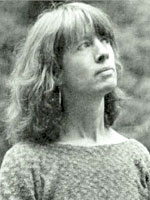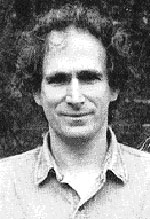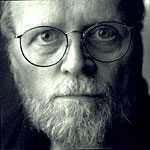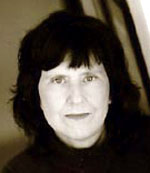
James Sherry reviews
The Grand Piano Project Part 1
by Bob Perelman, Barrett Watten, Steve Benson, Carla Harryman, Tom Mandel, Ron Silliman, Kit Robinson, Lyn Hejinian, Rae Armantrout, and Ted Pearson.
Paperback, 01 Jan 2007, Mode A/This Press, ISBN 978-0-9790198-0-X, $12.95. Available via Small Press Distribution at http://www.spdbooks.org/
This review is about 5 printed pages long. You can read James Sherry’s review of Part 2 in this issue of Jacket.
Editor’s Note: The Grand Piano is an ongoing experiment in collective autobiography by ten writers identified with Language poetry in San Francisco. It takes its name from a coffeehouse at 1607 Haight Street, where from 1976-79 the authors took part in a reading and performance series. The writing project, begun in 1998, was undertaken as an online collaboration, first via an interactive web site and later through a listserv.
The Grand Piano autobiography project is an effort to look at / look back at the historical moment when language-oriented poetry was first becoming a public phenomenon. The ten poets grouping themselves together for the purpose of the autobiography have strong ties to each other; and so Bob Perelman announces the first theme, among 10 total chapbooks each with contributions by the same 10 authors, is “love”.

Lyn Hejinian, photo by Carolyn Andrews
Although they are not associated with the topic, this group of writers knows something about love because they are almost all in very long term relationships, with one or two notable exceptions. Bob Perelman and Francie Shaw have grown children as do Barrett Watten and Carla Harryman (both represented in the book) and Lyn Hejinian and Larry Ochs. Ron Silliman and Krishna Evans have pre-teen twin boys. While some like Steve Benson have led less homespun lives, they all have experienced the ups and downs of love.
Love for each of the writers is largely separated from the visible sex of many other poets’ biographies; and the essays / reminiscences are often removed from direct discussion of love. Whether such distancing represses love or simply is a more mature view by older people who no longer need to prove they can do it is up to the reader to decide. Who slept with who during this pre-AIDS era is largely up to a fuller treatment of the subject.

Bob Perelman
The treatment of subsequent topics will help us understand what the collection of authors means by this approach: the greater the distance from the topic the more other material is available and the less direct the form of address. Such issues of distance have been central to the critique of language poetry that comes from the other post-war tendencies in poetry, but I am not going to dwell on the themes, facts, and paranoia of language bashing in this review of a far reaching and illuminating, if arbitrary, book of poet’s prose.
Each of the 10 sections of the book is a short essay on topics of love. Bob Perelman’s remarks on children’s books link love to the perception of permanence and the reality of continuous surprise. And in typical language poetry style Perelman’s denial of linkage makes the connection. “Love isn’t limited to the language-furthering relation of parent to child… .”

Barret Watten and son, 1985
Barrett Watten’s article addresses connections to the extended poetry world and his reference to Robert Grenier, one of the key precursors and practitioners of language poetry, is welcome.

Stephen Benson, self-portrait 2005
The statements about love in Watten’s essay, however, leave translating C__ to Carla to the very end. While he justifies his indirectness with a statement about will, the extended set of references to other writers has to stand on its own as an extension of love rather than love itself, a language poet trope for sure.
Steve Benson writes about his children in the most direct way and love prospers. Steve adds the temporal linkage of “love and epistemology” to give us a sense of just how long ago these events took place. He uses that abstraction to leave out a lot of specific issues that would help the reader know who Steve was and has become: an odd indirection for a psychologist.

Carla Harryman
Carla Harryman’s contribution is about gender, militarism, and poetry. Her memory starts with the Viet Nam war. Her statement that “The theme of love in poetry recollects all the above in my mind and has something to do with my then investigation of discordant sentences… ,” implies her willingness to accept the conflicts of love as part of her feminism, another topic for her essay. This complex piece was worth rereading.

Tom Mandel
Tom Mandel’s remarks as Director of the Poetry Center at the time illuminate the institutional and political picture. But his most interesting paragraph to me occurs on p. 41 where he starts using “you” to refer to the group of poets and ends referring to an unnamed individual whom he quotes, so the person’s identity is apparently traceable.

Ron Silliman, photo by Jeff Hurwitz
Ron Silliman, as an individual, has probably done more to link people with his writing than any of the group. (His concept of The New Sentence is precisely about relationships.) His autobiographical statements start with his family and end with the group of poets in question pointing to extensible love and the inexorable fact of relationships: “Not that there have not been difficulties, rough spots, and contradictions--in fact, precisely because there have been these and we have come through them and continue to do so here. Love, Ron.”

Kit Robinson, photo by Erica McConnell
Kit Robinson starts by paraphrasing Shklovsky, “in order to write about love one must write about everything not about love.” In making this statement he brings out epistemological linkage as one of the central themes of all the essays. I found this abstraction odd because Kit has been the most reminiscent of the NY School of any of the writers in this group and as such I’d have expected him to have more to say directly on the subject of relationships.
Lyn Hejinian’s piece addresses language writing and in relief I see her accepting what was, rather than redefining language writing by pretending it did or didn’t exist. I like this essay because it supports my own theme of loose coupling, rather than love, as the defining characteristic of the group. Lyn accomplishes that by linking the writers to their reading and connections with her reading and writing: love as literature.

Rae Armantrout
Rae Armantrout in her characteristically laconic way points to the other aspect of love linked to poetry, how “while objectification and identification may grow from the same root, they are experienced differently.” “This gets pretty disturbing,” as Rae points to the more subtle problem of trying to bypass the first person lyric, considering the fact that “Pronouns don’t go away.”
Finally, Ted Pearson’s direct statements about “fellowship” and good will point to the social nature of love in a way that these poets collectively mean.
With all this convergence of themes and lives, the overall project of The Grand Piano seems tangled. First, centering on social relations of the personal type appears more like the NY School of Poetry than the loosely coupled language group. Ron Silliman and Lyn Hejinian have spent more time figuring out how to write poetry about the relationships of ideas rather than a poetry whose language was associated with the diurnal concerns of meetings and greetings: language poetry has not been associated with personism.

Ted Pearson
Second, fixating on the “beginnings” of language poetry contradicts many of the other writings of the group, especially the political points of view, where ontology can be unhinged from subsequent events and history is constantly brought into question. Watten is obviously aware of this issue in his piece in this first volume, “Whose originary moment? Whose community?”, but the overall consortium appears driven by a linkage to the origins they’re papering over. Such an effort might be more appropriately addressed by poets involved with identity politics.
Finally, the geographical association with the Bay Area seems far removed from the basis of language poetry, a widely dispersed, even global group known more for moving and mixing than writing about or around location. Such writing-localized writing might be associated with Black Mountain poets, Maximus, in particular. Although in this first book the constant reappearance of Creeley and For Love might make me think of Black Mountain, the Piano project in its first volume is a summary of all post-war poetries with language poets offering a focal point. Pointing to this summarizing aspect of language poetry may be more useful to understanding the larger group of language poets than the topic of love itself.
As I read through the short statements, each with its own focus and often paying only lip service (sic) to the common theme, I remember how individuals of the so-called language group have never needed their affiliation to justify their writing, various collaborations such as Legend aside. To this writer, at least, the mechanisms of weak linkage that allow accumulation of composite poetry by individuals and collaborations have been the great strength of this extended set of poets as opposed to the cultish devices that other coteries of writers have used to generate community. I look forward expectantly to the second volume of The Grand Piano.